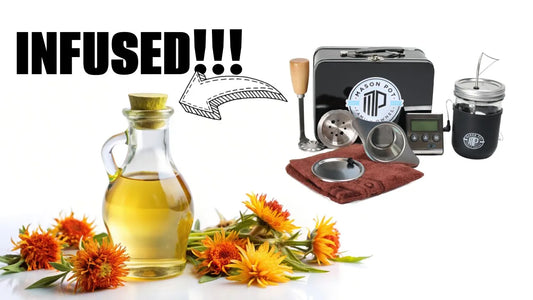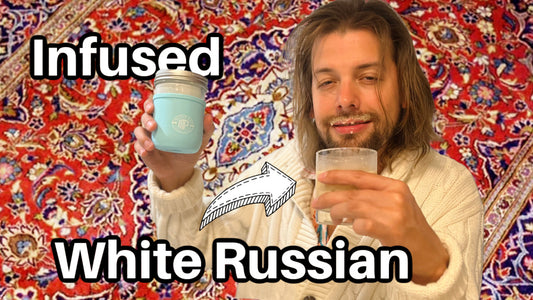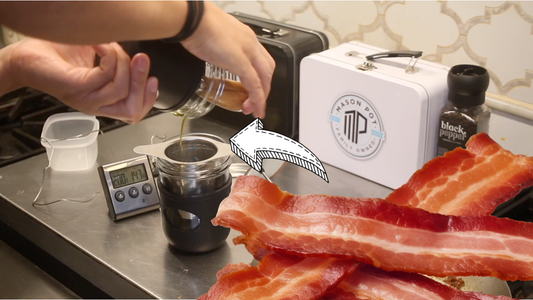Hello, my cannabis enthusiasts! We're diving into a common question today: does the color of your cannabis infusion indicate its potency? This is a topic that has come up frequently, so let's get into the details and debunk some myths.
Understanding the Color Variations in Cannabis Infusions
Firstly, it's important to clarify that the color of a cannabis infusion does not necessarily correlate with its potency. To illustrate this, consider two different types of cannabis flowers: a light-hued Sativa and a dark, purple-hued Indica. If you infuse both types in butter using the same method, the resulting color of the infusion will differ—the Indica will likely produce a darker butter due to its natural pigmentation, while the Sativa will result in a lighter color. However, this color difference does not imply that one is stronger than the other. The Sativa could potentially have a higher concentration of cannabinoids than the Indica, making it equally or more potent despite its lighter color.
Factors Influencing Color
The color of your cannabis infusion can be influenced by several factors:
- Type of Cannabis: As mentioned, the natural color of the bud can affect the hue of the infusion. Darker strains often lead to darker infusions.
- Material Used: Using different parts of the plant, such as trim, shake, or live resin, can also impact the color. For example, infusions made with a lot of trim and shake tend to be darker because these parts of the plant are inherently darker than fresher buds.
- Decarboxylation: The process of decarboxylation, which involves heating cannabis to activate its cannabinoids, can darken the plant material. If you decarb your cannabis before infusing it, this could result in a darker end product.
Practical Implications of Infusion Color
While the color of the infusion might not affect its strength, it can have other practical implications, especially in culinary applications. If you're into making edibles, the color of your infusion can impact the appearance of the final product. For instance, using a dark cannabis butter in a batch of sugar cookies might give them a greenish hue, reminiscent of "green eggs and ham," which might be visually unappealing. In contrast, a lighter-colored infusion, such as one made with live resin, would be less noticeable in the same cookies, maintaining their traditional appearance.
Personal Preferences and Applications
Personally, I don't focus much on the color of my infusions as I primarily use them in tinctures and savory dishes where the color is less noticeable. However, for those who enjoy baking or other forms of edible creations, the color could be a more significant factor. It's all about knowing your end goal and how the color of your infusion might affect the aesthetics of your culinary creations.
Engaging with Your Questions
I appreciate all the questions and comments from you, my fellow cannabis enthusiasts. Addressing your cur iosities helps us all learn and grow in our understanding of cannabis infusions. It's important to keep the dialogue open, as it allows us to explore and clarify common misconceptions, like the one about infusion color and potency.
The Role of Consistency in Infusion Processes
Another interesting aspect to consider is the consistency of your infusion process. If you consistently use the same method, the same amount of cannabis, and the same type of cannabis but notice a significant color variation between batches, it might be worth investigating further. Variations could be due to differences in the decarboxylation process or the duration of infusion. These factors can influence not only the color but potentially the potency and flavor profile of your infusion.
For example, if you use the same strain of Granddaddy Purple in two separate infusions and one batch comes out significantly lighter or darker than the other, you might want to consider whether there were any differences in the preparation or processing stages. This could include variations in decarboxylation time or temperature, which can affect the chemical composition and, consequently, the color of the infused product.
Decarboxylation and Its Impact
Decarboxylation is a crucial step for activating THC, the psychoactive component in cannabis. While it's possible to skip this step for a lighter-colored infusion, it's important to note that this will likely result in a less potent product. However, skipping decarboxylation might preserve more terpenes, which are compounds in cannabis that contribute to its aroma and flavor but are sensitive to heat.
This trade-off between potency and terpene preservation is something to consider depending on your personal preferences and the intended use of your cannabis infusion. If flavor is more important to you than maximum potency, you might opt for a lighter infusion process that skips or shortens the decarboxylation step.
Conclusion: Color Is Not King
In conclusion, while the color of your cannabis infusion can give you clues about the methods and materials used, it's not a reliable indicator of potency. Understanding the factors that influence the color can help you better control the outcomes of your infusions, whether you're aiming for aesthetic appeal in edibles or balancing potency and flavor in tinctures.
Remember, the world of cannabis is vast and varied, and there's always more to learn. Keep asking questions, experimenting, and sharing your experiences. Whether you're a seasoned cannabis chef or a curious newcomer, your journey with cannabis is unique, and every bit of knowledge helps in crafting the perfect infusion.
Thank you for joining me in this exploration of cannabis infusions. If you found this article helpful, consider sharing it with a friend or fellow enthusiast. Let's continue to spread the knowledge and joy of cannabis together. See you in the next discussion!
https://masonpot.com/collections/mason-pot-infuser-kits




